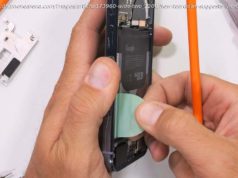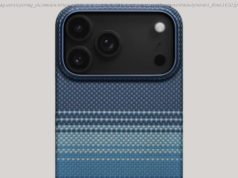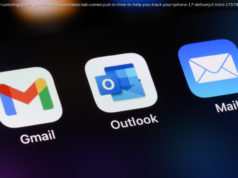The venerable DSLR is a complex and feature-rich piece of technology, developed through years of research. You are probably not using it for all it’s worth.
Before you rush to go buy a new-fangled mirrorless camera, take another look at your digital SLR camera to see what features might be hiding amidst the myriad menu options. Yes, that DSLR over there, collecting dust on that shelf. The camera you bought a year or two (or more) ago because you love taking pictures and you wanted to level up your imaging game — and then got stuck in Program mode, overwhelmed by your camera’s complexity.
That’s okay, we get it: DSLRs (and their mirrorless cousins, for that matter) have a deep, tiered subsystem of menus and a slew of cryptic buttons and graphics. Here we will dig into some of the settings and actions that can totally transform your results, from shooting RAW to adjusting your camera’s picture style and understanding the histogram.
All the tips here are valid for DSLRs, and most hold true for mirrorless cameras, too. We vetted these tips on DSLRs dating back to 2011. That said, in some cases you may see less or no support for something we discuss, especially if you have an older or lower-end model (and we’ve noted this where applicable).
Whether you’ve had your digital SLR for a couple of years or you just picked one up recently on a deal, these tips can get you shooting — and sounding — like a pro. Not only can you elevate your imaging to a whole new level, but you can find ways to personalize your shooting experience, too.Learn manual settings, part 1
If you’re not already acquainted with terms like aperture and shutter speed, it’s high time you were. Understanding these terms is integral to getting off auto or program mode, where the camera chooses these settings (program mode typically gives a little more flexibility than auto). One of the biggest benefits of a DSLR is that you can make creative choices in how to capture an image. All the exposure-related choices discussed here require a basic understanding of aperture and shutter speed. The key thing is to know what to adjust when –- especially if your vision has specific needs.
Aperture refers to the lens’ opening, which in turn impacts how much light gets into the camera. A lower aperture of f/1.2 or f/1.8 lets more light into the lens, and it has the effect of blurring the background elements (referred to as bokeh). Higher apertures increase the depth of field. If you want everything in the foreground and background in focus, you need to work with a higher aperture (say f/8 to f/22).
Shutter speed refers to how quickly the shutter cycles to let light in and expose the image. A slow, or long, shutter speed lets in more light, but can trade off sharpness or clarity if you’re using the camera handheld (especially if you go above 1/30 of a second). Faster shutter speeds freeze action. If you’re trying to capture Simone Biles’ Yurchenko Double Pike vault, you want to shoot at a high shutter speed of at least 1/1,600, for example. And if you want to freeze the Blue Angels F/A-18 Super Hornets as they streak overhead, expect to bump your shutter speed to 1/2,500 or more.Learn manual settings, part 2
Now that we’ve defined the basic terms, let’s show why learning them matters for shooting in manual mode. While there is no single correct permutation of exposure settings, the goal is to find the settings that best capture your artistic vision or intent.
Shooting manual is especially useful for complex images in low light, or for keeping the focus on a specific object. Let’s say you want to make sure your image is sharp, even though you’re shooting in a dimly lit room. If you use auto, program, or even shutter or aperture priority modes, you don’t have full control over the image. So, for example, the camera might bump your shutter speed below the minimum for capturing a sharp image in favor of letting in more light. But if you control the settings in manual mode, you can choose a shutter speed that’s higher — say 1/40 or 1/60 of a second — in favor of minimizing motion blur and getting a darker image exposure instead (or a similar exposure by upping your ISO setting). You can always brighten the image in an image editor (especially if you shoot RAW — more on that next), but you can’t save a completely blurry frame.
Another example: You want the apples on the tree to stay in focus, with everything behind them blurred out (referred to as bokeh). In manual mode, you can select the lowest aperture of your lens and then adjust the shutter speed (and ISO) around that setting. If the image is dark, again just fix it in post-production.Shoot RAW
Cameras capture images in a standard JPEG format, with image processing handled by the camera’s algorithms. But JPEG is so ordinary. Switch things up and shoot RAW images to open up a whole new world of artistry.
RAW images record the camera sensor’s uncompressed and unprocessed information about the scene, which is why this format is often thought of as a digital negative (not to be confused with Adobe’s .DNG digital negative format). The advantage of shooting RAW is simple: You get infinitely more creative control in post-production, and you can have an easier time rescuing images that are over- or under-exposed. Since RAW files collect all the information that contributes to making the image, you have full access to adjusting shadows, highlights, and more. Your adjustments are non-destructive, and they won’t cause as much banding and noise as you’d get if you made the same adjustments to a JPEG.
On some cameras, you have to first enable shooting RAW and then select it from the image quality menu. The resulting files have proprietary extensions –- for example, Canon uses either .CR2 or .CR3, while Nikon uses NEF.
One caveat: Since RAW files are lossless and uncompressed, your images are going to require a lot more space on your SD card or CompactFlash card media. Depending upon the camera model and sensor, a typical RAW file on Canon or Nikon can range from 20MB to 30MB, more than four times the size of the highest quality JPEG. Memory cards are less costly than they were, and the benefits of RAW outweigh the fact that you need to keep an extra card or two on hand if you decide to shoot RAW (or RAW + JPEG so you have the convenience of a pre-processed JPEG).Set a custom white balance
White balance refers to the image’s color temperature and how white whites look. The choice of white balance affects more than whites, though: It impacts all colors, including skin tones. Go too warm and images look more yellow and unnatural, as in the example above from Canon-Europe’s excellent discussion of white balance; go too cold, and you get more blues in the image — different, but still unnatural.






